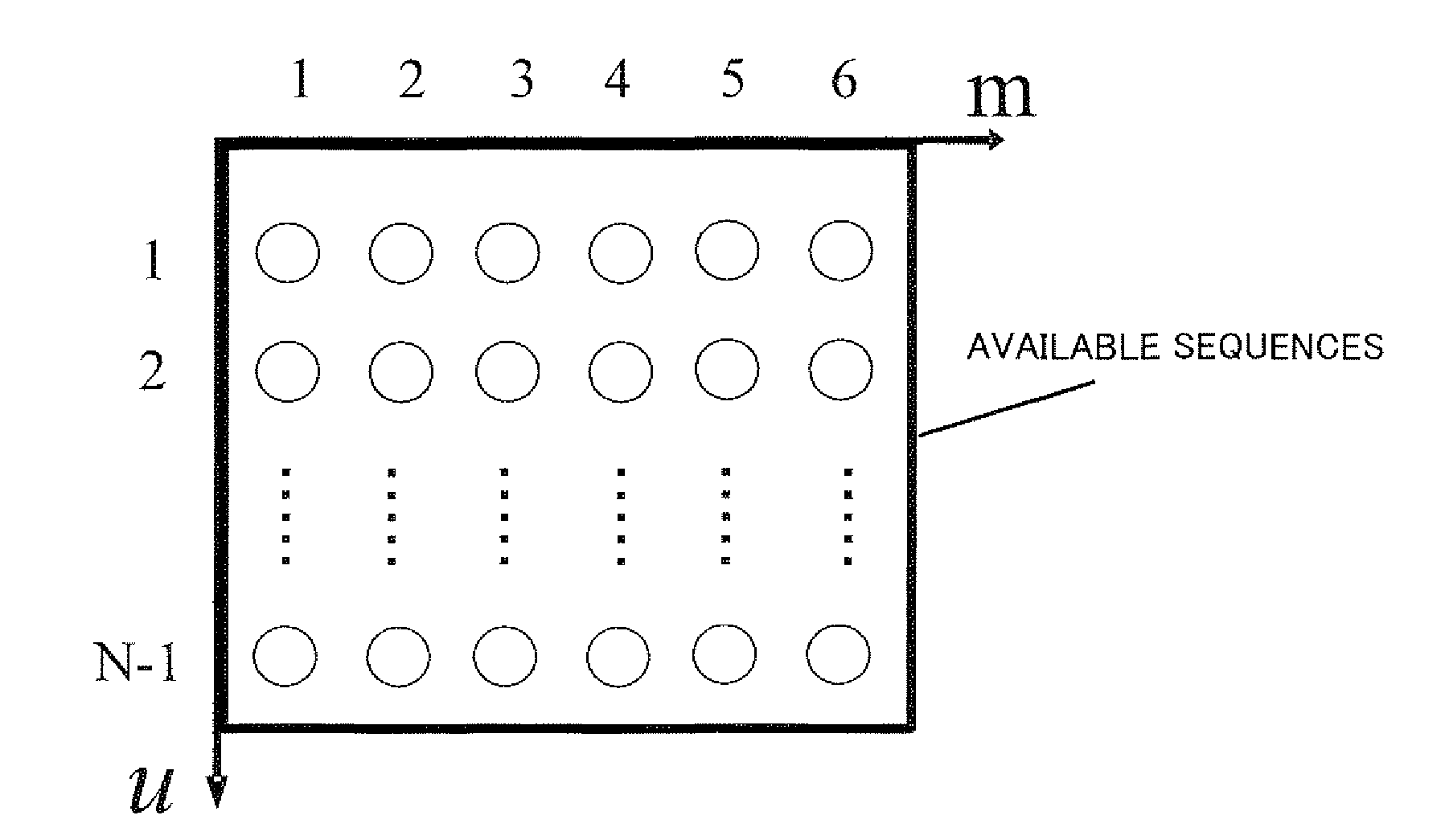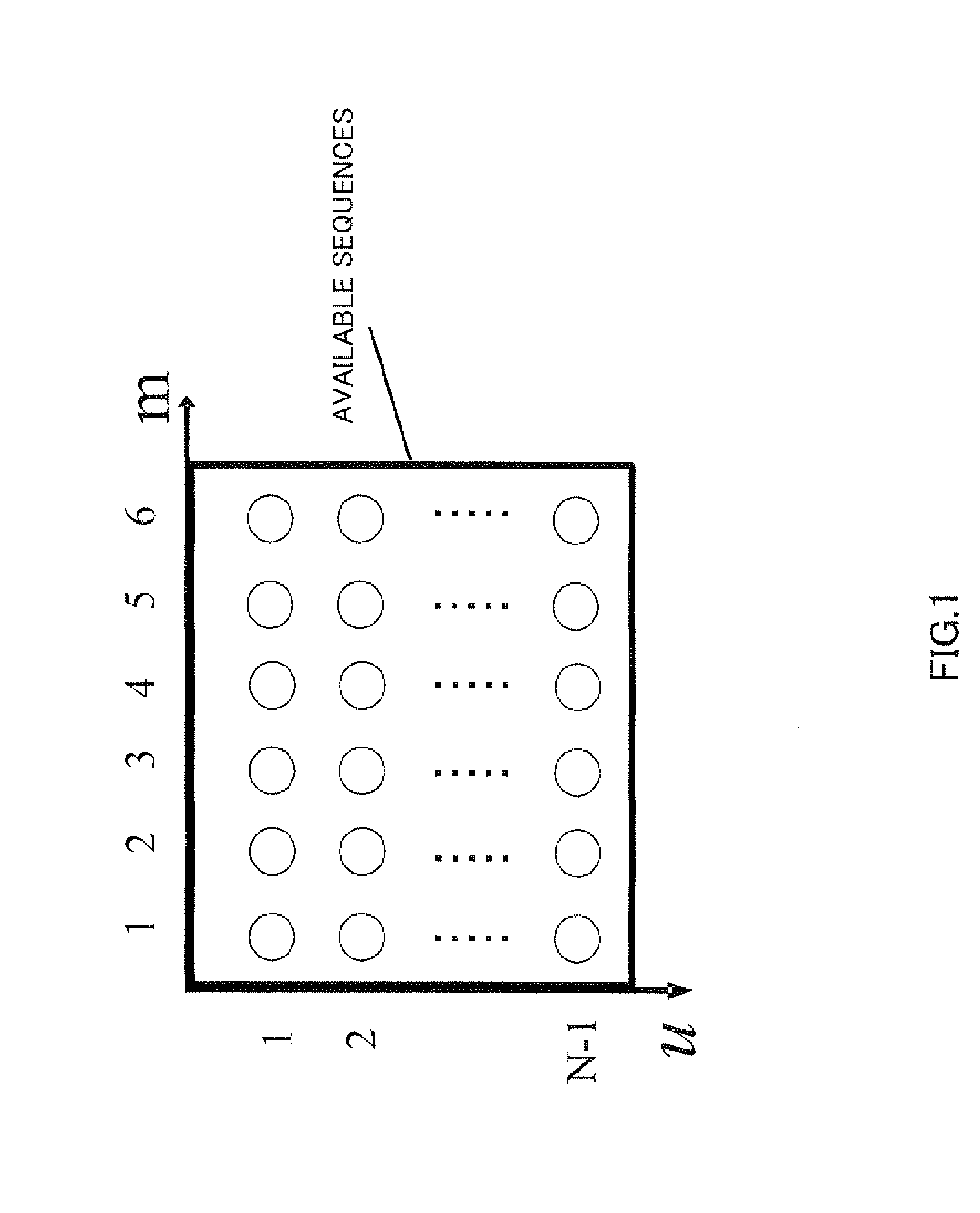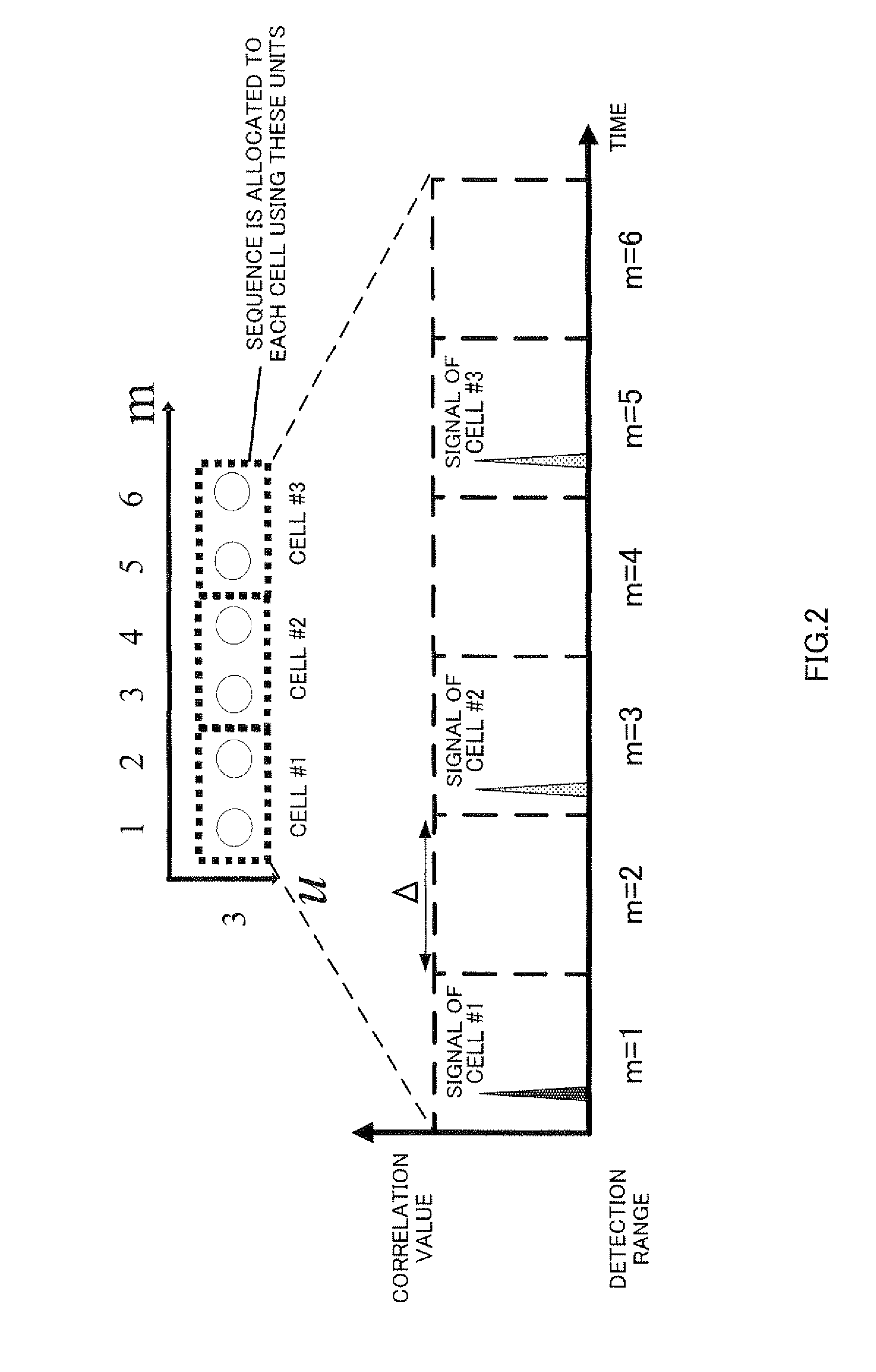Radio communication terminal device, radio communication base station device, and radio communication method
a radio communication and base station technology, applied in multiplex communication, digital transmission, phase-modulated carrier systems, etc., can solve problems such as channel estimation errors, and achieve the effect of preventing interference wave peaks and improving channel estimation precision in the base station
- Summary
- Abstract
- Description
- Claims
- Application Information
AI Technical Summary
Benefits of technology
Problems solved by technology
Method used
Image
Examples
embodiment 1
[0061]The configuration of terminal 100 according to Embodiment 1 of the present invention will be explained using FIG. 7. RF receiving section 102 performs reception processing such as down-conversion and AD conversion of a signal received through antenna 101, and outputs the signal subjected to reception processing, to demodulating section 103. Demodulating section 103 performs equalization processing and demodulation processing of the signal outputted from RF receiving section 102, and outputs the signal subjected to these processings, to decoding section 104. Decoding section 104 performs decoding processing of the signal outputted from demodulating section 103, and extracts a data signal and control information. Further, in the extracted control information, decoding section 104 outputs the RB (Resource Block) allocation information to phase rotation applying section 110 and mapping section 111 of reference signal generating section 108.
[0062]Encoding section 105 encodes transm...
embodiment 2
[0107]Although a case has been explained above with Embodiment 1 where the reference point is set in all cells in which frame synchronization is established as well as in the transmission bandwidth of each terminal, and phase rotation corresponding to the frequency difference δ between the reference point and the transmission band of the reference signal is applied to the ZC sequence in the frequency domain, a case will be explained with Embodiment 2 of the present invention where cyclic shift corresponding to the frequency difference δ between the reference point and the transmission band of the reference signal, is applied to the ZC sequence in the time domain. Further, the configuration of the base station according to Embodiment 2 of the present invention is the same as the configuration of Embodiment 1 shown in FIG. 9, and therefore detailed explanation thereof will be omitted.
[0108]The configuration of terminal 200 according to Embodiment 2 of the present invention will be exp...
embodiment 3
[0120]A case will be explained with Embodiment 3 of the present invention where cyclic shift corresponding to the frequency difference δ between the reference point and the transmission band of the reference signal is applied to the ZC sequence in the frequency domain. Further, the configuration of the base station according to Embodiment 3 of the present invention is the same as the configuration of Embodiment 1 shown in FIG. 9, and therefore the detailed explanation thereof will be omitted.
[0121]The configuration of terminal 300 according to Embodiment 3 of the present invention will be explained using FIG. 16. FIG. 16 differs from FIG. 7 in changing phase rotation applying section 110 to cyclic shift applying section 301.
[0122]Cyclic shift applying section 301 applies cyclic shift corresponding to the frequency difference δ between the reference point and the transmission band of the reference signal, to the ZC sequence outputted from DFT section 109, and outputs the ZC sequence,...
PUM
 Login to View More
Login to View More Abstract
Description
Claims
Application Information
 Login to View More
Login to View More - R&D
- Intellectual Property
- Life Sciences
- Materials
- Tech Scout
- Unparalleled Data Quality
- Higher Quality Content
- 60% Fewer Hallucinations
Browse by: Latest US Patents, China's latest patents, Technical Efficacy Thesaurus, Application Domain, Technology Topic, Popular Technical Reports.
© 2025 PatSnap. All rights reserved.Legal|Privacy policy|Modern Slavery Act Transparency Statement|Sitemap|About US| Contact US: help@patsnap.com



